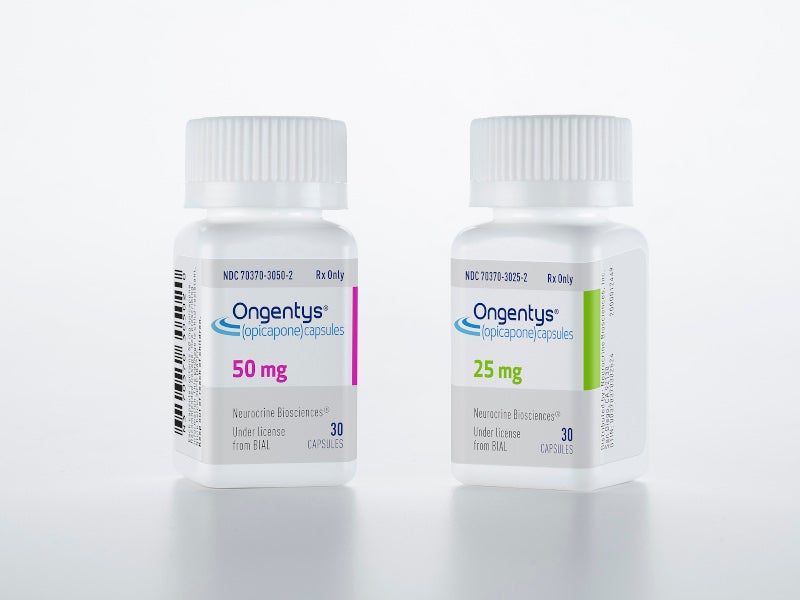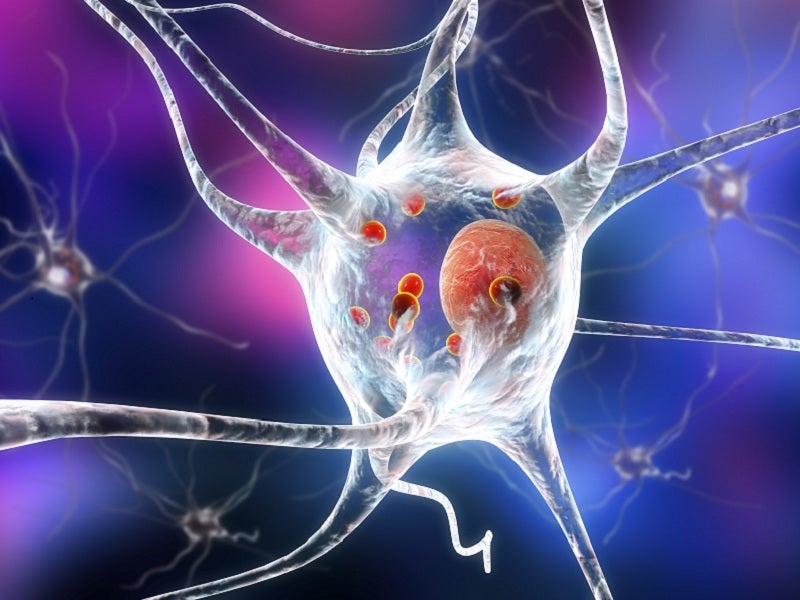ONGENTYS® (opicapone) is the first and only approved catechol-O-methyltransferase (COMT) inhibitor indicated for the treatment of Parkinson’s disease with off episodes, used as an adjunctive treatment to levodopa and carbidopa.
ONGENTYS (opicapone) was developed by Portuguese pharmaceutical group BIAL. Neurocrine Biosciences entered an exclusive licensing agreement with BIAL for the development and commercialisation of opicapone in North America in September 2017.
BIAL is currently responsible for the marketing of ONGENTYS (opicapone) in the UK, Italy, Spain, Germany and Portugal.
ONGENTYS approvals
The European Commission approved ONGENTYS (opicapone) with levodopa and carbidopa for the treatment of Parkinson’s disease in June 2016.
A New Drug Application (NDA) for ONGENTYS (opicapone) was accepted by the US Food and Drug Administration (FDA) in October 2019.
The FDA approved ONGENTYS (opicapone) as an add-on treatment to levodopa and carbidopa in patients with Parkinson’s disease experiencing off episodes, in April 2020.
Neurocrine Biosciences is planning to launch ONGENTYS (opicapone) in the US in the second half of 2020.
ONGENTYS (opicapone) will be available as oral capsules with a recommended dosage of 50mg administered once daily.
Parkinson’s disease causes and symptoms
Parkinson’s disease is the second-most common neurodegenerative disorder, caused by reduced dopamine levels in the brain.
Dopamine is a chemical messenger that helps in signal transmission for controlling body movements including walking, swallowing, writing and talking.
Dopamine is produced by neurons in the substantia nigra, a region in the midbrain. Decreased production of dopamine leads to abnormal nerve pattern that impairs movement.
Parkinson’s disease is a progressive, chronic and debilitating disease affecting mostly older people aged 60 or more, more common in men when compared to women.
The symptoms can be motor or non-motor including tremors, bradykinesia (slowness of movement), rigidity, impaired balance and posture, depression, sleep problems, fatigue, anxiety, pain, difficulty in writing and speech, as well as other psychiatric problems.
Levodopa along with carbidopa is the gold standard treatment currently available for controlling motor symptoms in Parkinson’s disease.
Opicapone mechanism of action
Opicapone is a novel, peripheral, selective and a reversible inhibitor of catechol-O-methyltransferase (COMT).
Opicapone blocks the COMT enzyme, responsible for breaking down levodopa, making more available to reach the brain by increasing its clinical effects and enabling patients to gain control over motor symptoms.
COMT stimulates the transfer of a methyl group of S-adenosyl-L-methionine to the substrates phenolic group comprising a catechol structure.
Physiological substances of COMT constitute catecholamines (dopamine, norepinephrine, and epinephrine), DOPA and their hydroxylated metabolites.
When carbidopa prevents the decarboxylation of levodopa, COMT becomes the major levodopa metabolising enzyme, catalysing its metabolism to 3-methoxy-4-hydroxy-L-phenylalanine (3-OMD).
Clinical trials on ONGENTYS
FDA approval of ONGENTYS was based on two randomised, multinational, parallel-group phase III studies, BIPARK-1 and BIPARK-2.
In BIPARK-1 (study 1), 600 patients were randomised to receive one of the three doses (5mg, 25mg or 50mg) of ONGENTYS.
In study 1, 82% of patients in both the treatment groups were given concomitant medications for Parkinson’s disease including levodopa. The most commonly administered therapies were amantadine (23%), dopamine agonists (68%), anticholinergics (5%) and MAO-B inhibitors (20%).
In BIPARK-2 (study 2), 427 patients were randomised to receive either 25mg or 50mg dosages of ONGENTYS once daily (n=283) or placebo (n=144).
In study 2, 85% of patients treated with ONGENTYS 50mg received concomitant Parkinson’s disease medications in addition to levodopa. Amantadine (21%), dopamine agonists (70%), anticholinergics (12%) and MAO-B inhibitors (20%) were used as the concomitant medications.
Both studies, BIPARK-1 and BIPARK-2 included a one-year open-label extension.
The primary measure outcome was the change from baseline in absolute off-time at the end of the double-blind (DB) period of 14-15 weeks.
In both studies, ONGENTYS 50mg significantly reduced mean absolute off-time from baseline to week 14 or 15 compared to placebo. A significant increase in “on” time without difficult dyskinesia from baseline to week 14 or 15 was found when compared to placebo.
The most common adverse reactions observed during the BIPARK-1 and BIPARK-2 studies were constipation, dyskinesia, weight decrease, loss of consciousness, increased levels of creatine kinase and hypotension.






